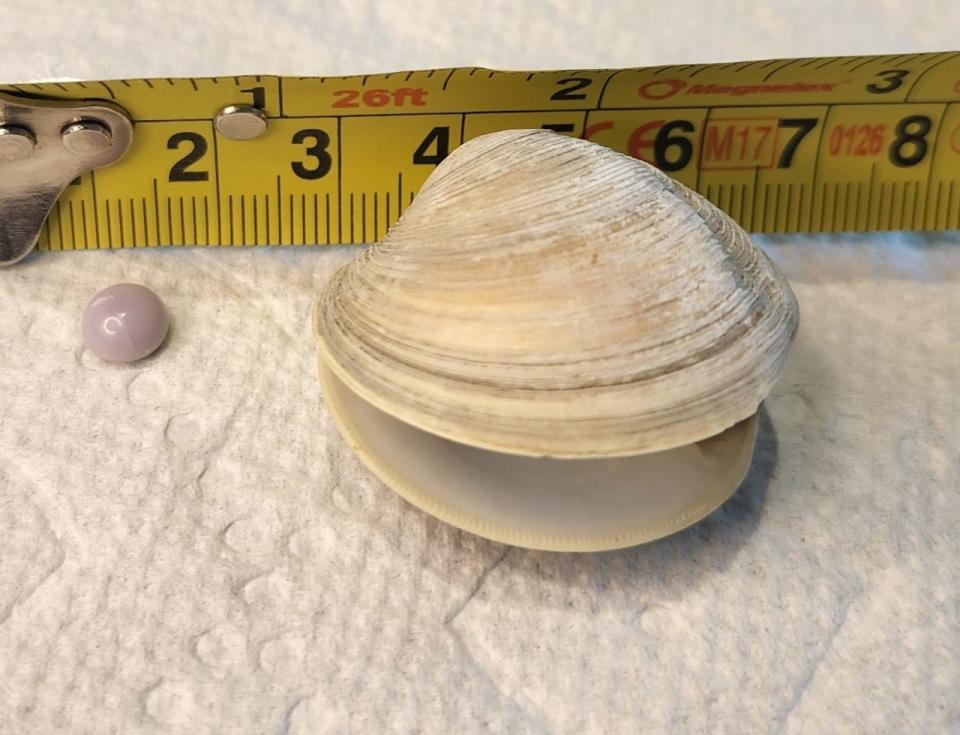Purple pearl, sea angels and more: Plumbing the depths for gifts from the seas
The grocery store prices of halibut, yellowfin tuna and Chilean sea bass are all above $30 — and that’s per pound, not per fish. Perhaps it’s time to take an in-depth look, if you know what I mean, at what other things of value are residing in Neptune’s Kingdom.
For starters, and shellfish sometimes are, there’s the curious tale of a tourist dining at Salt Air. He orders the Little Neck Clams appetizer and bites down on what turns out to be a purple pearl.
The man in question goes by the name of Scott Overland, a particularly ironic last name for someone who experienced an approximately $4,000 increase in his personal wealth because of a gift from the sea.

Mr. Overland’s pearl was not a “cultured” one, which is not to say that it was uncivilized. Rather, it was “natural,” to the extent that a mollusk can be called such when it is the product of an offshore sea farm.
In any case, one must admire a pearl that chooses to be purple, resisting the temptation to be either blue or red in our politically charged society, but one must question how numerous its siblings are.
In general, a pearl in a clam is relatively rare. Much more numerous is the so-called naked sea butterfly that has recently been making its presence known in coastal waters.
A mere three inches in length, this small slug masquerading as an aquarian butterfly features a multi-colored translucent body and wing-like appendages. The latter are responsible, no doubt, for its alternate “sea angel” appellation.
SEA ANGELS? Naked sea butterfly are washing up on Eastern Shore beaches. What is it?
It has caused quite a stir south of the border, in Maryland that is. A few years ago, the town of Ocean City had its panties, or rather its bikinis, in a bunch over the question of whether women were entitled, like men, to go topless on the beach. In the end, it took a judicial, and probably judicious, decision to negatively answer that question.
More recently, much to its horror, the town was unable to prevent the appearance of the not just naked, but even more shocking, partially translucent, sea butterflies in its territorial waters.
Particularly galling to the town residents was the fact that this indecency was being flaunted by a species commonly known as the sea angel.
In contrast to the diminutive naked sea butterfly, the blue catfish is a bay inhabitant on PEDs (performance-enhancing drugs, not low-cut socks), sometimes weighing over 100 pounds. Introduced into the Chesapeake Bay in the 1970s as a sporting or “trophy fish,” it has thrived in its adopted environment.
Unfortunately, blue catfish have become a threat to another sea creature of the same hue, with these trophy fish creating their own rewards, rather than awards, by each consuming one or two blue crabs a day.
Not to worry. It has been suggested that one way to control the ravenous blue catfish would be to pit this invasive species against another (seniors retiring to the coast) by increasing commercial as opposed to recreational fishing of the big cat.
According to local food critic Pam George, blue catfish have “a flaky texture and mild taste,” and are already on the menu as a sandwich at the Lewes Oyster House.
INVASIVE CATFISH: Is invasive blue catfish depleting Maryland blue crab? Gov. Moore wants feds to help
This was not what blue catfish had in mind when they agreed to serve as trophy fish.
Despite their objections, blue catfish could prove to be a “lucrative revenue stream,” if not an entire bay. A recent PBS documentary, "Eatin’ Blue Catfish," was devoted to the subject, accompanied by the tagline “if you can’t beat ‘em, eat ‘em.”
Finally, and not to be confused with the aforementioned naked sea butterfly, we have the intriguing and similarly named butterfly stingray.
A giant 222.5-pound specimen, as in Guinness World Record wannabe, was caught last June by a bow fisherman on a charter boat out of Dagsboro. After being duly measured, weighed, and photographed for our statistical friends across the pond, it yielded 70 pounds of meat.
Stingrays are abundant in the Delaware Bay, and the butterfly purportedly is the best tasting of the species. This begs the question of why they, too, are not on the menu at coastal restaurants.
It’s true that these rays are not particularly attractive, but neither are blue catfish. However, If you can sell a whiskered water giant, you should be able to market a butterfly ray. All it takes is a little filleting, or perhaps a serrated biscuit cutter to create stingray simulated scallops.
If all this wasn’t fishy enough, there were reports last year that Atlantic white shrimp had migrated as far north as Maryland. The shrimp may soon be commercially harvested in the Old Line State, although fishermen there prefer to catch them by trawling with nets rather than using “old-line” methods like shrimp traps.
Mike Berger is a freelance writer and retired university administrator with a home in Lewes. Contact him at edadvice@comcast.net.
This article originally appeared on Salisbury Daily Times: Fishy business: An in-depth look at finding more value from the seas

